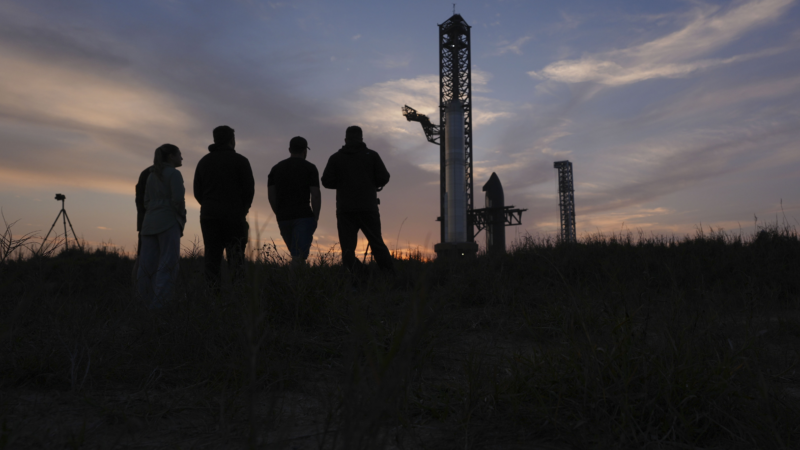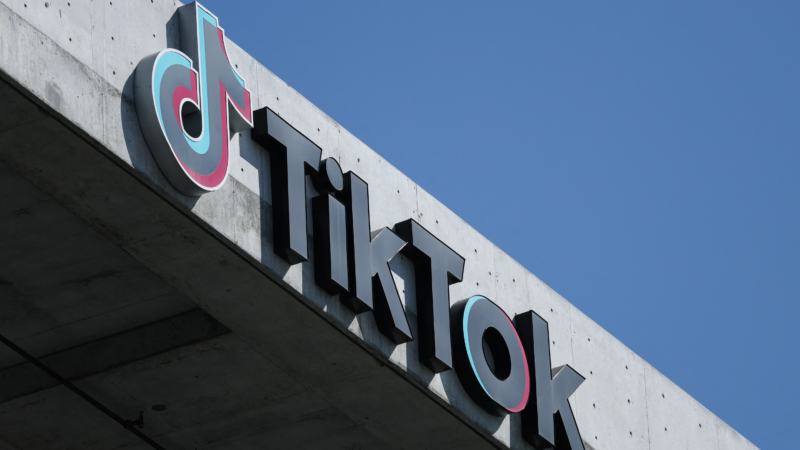Elon Musk’s Starship rocket prepares to fly again
A little over a month after a catastrophic failure peppered the Caribbean with falling debris, Elon Musk’s company SpaceX is readying another flight test of the largest rocket ever built.
Known as Starship, the rocket stands just over four hundred feet tall. It’s made of stainless steel and is designed to one day be fully and rapidly reusable – meaning that both the rocket and its Super Heavy booster could be launched again just hours after returning from space.
Such a vehicle would radically lower the cost of launching satellites and people into orbit. In the near term, SpaceX plans to use Starship to greatly expand its fleet of Starlink internet satellites. NASA has also paid the company billions to develop Starship into a lunar lander for its upcoming Artemis missions to the moon.
But the ultimate goal of Starship is to get humans to Mars. Elon Musk founded SpaceX with the dream of making life multiplanetary, a dream he reiterated in a discussion on The Joe Rogan Experience on February 28.
“We’re at this point in time, where, for the first time in the four-and-a-half-billion-year history of Earth, it is possible to extend consciousness beyond our home planet,” Musk said. “That window may be open for a long time, or it may be open for a short time.”
Musk said that he hoped one or more uncrewed Starships to the red planet could launch as soon as November of 2026, when Earth and Mars are in close alignment.
“We’re going to try to go as fast as possible,” he told Rogan.
Speed is central to Starship’s development process, says Tim Farrar, president of TMF associates, which tracks the commercial space business. SpaceX likes to “move fast and break things,” Farrar says. “You can get a lot done if you’re prepared to take a lot of risk,” he says.
The fast-but-risky strategy was on display after the last launch on January 16. As it headed towards the edge of space, Starship suddenly caught fire and exploded. Vacationers in Turks and Caicos caught the flaming debris on video as it streaked across the sky. The falling debris also forced the Federal Aviation Administration (FAA) to suddenly close a vast tract of airspace along the rocket’s flight path. More than a dozen commercial flights were diverted as a result of the closure.
In a statement last week, SpaceX said that the fire began in an unpressurized section at the back of the rocket. SpaceX said it believed the fire was caused by a fuel leak, which in turn was created by a strong vibration in the body of the rocket. The company says it has made modifications to both hardware and its operating procedures to prevent a similar failure going forward. The FAA said in a statement that it was allowing the latest flight test to proceed, even as its investigation into the mishap remains open.
The flight test also comes at a time when several current SpaceX employees have been assigned to work at the FAA, as part of Elon Musk’s efforts to overhaul parts of the U.S. government. The presence of the SpaceX engineers was first reported by Wired. One of the engineers, Ted Malaska, posted on X that he was “working without biases for the safety of people that fly.” In recent days, Malasaka also posted a series of AI-generated images of Starship using Grok, the AI chatbot built into Elon Musk’s X platform.
FAA did not immediately respond to a request for comment on the SpaceX employees, but a story by Politico states that, as part of their employment, they are barred from the section of the FAA which oversees commercial spaceflight.
In many regards, this latest flight test will resemble the one that took place last month. If all goes according to plan, Starship will fly to the edge of space, while its super-heavy booster returns to the launch pad where it will be grabbed by a gigantic pair of robotic arms. As it cruises above the earth, it will attempt to deploy four simulated Starlink satellites. It will then reenter Earth’s atmosphere and land in the Indian Ocean near Australia.
Taiwan’s president pledges to defend island’s sovereignty after Chinese military drills
Taiwanese President Lai Ching-te vowed to defend the self-ruled island's sovereignty in the face of what he termed China's "expansionist ambitions," days after Beijing wrapped up live-fire military drills near its shores.
Deaths reported during widening protests in Iran sparked by ailing economy
The protests began due to economic pressures, with Iran's currency rapidly depreciating. Demonstrators have also chanted against the country's theocracy.
Congress failed to extend Obamacare subsidies. This Democrat says Trump can save them
Sen. Peter Welch, D-Vt., says he thinks the Senate can pass a "retroactive" Affordable Care Act subsidy extension, but "we need President Trump."
Rideshare union rights, social media limits and other state laws taking effect Jan. 1
Every new year, public media reporters across the country bring us some of the new state laws taking effect where they are. Here are six in 2026.
Guides to help you tackle your New Year’s resolutions
From building your strength to tackling credit card debt, NPR's Life Kit has a newsletter journey to help you tackle your New Year's resolution.
Guides to help you tackle your New Year’s resolutions
From building your strength to tackling credit card debt, NPR's Life Kit has a newsletter journey to help you tackle your New Year's resolution.






